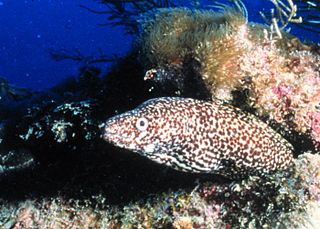
The spotted moray is a medium to large moray eel. Other common names include conger, spotted eel, red moray, speckled moray, white cong, white jawed moray, white-chinned moray and white-jawed moray eel. Spotted eels have a long snake-like body, white or pale yellow in general with small overlapping reddish brown to dark-brown spots. They are commonly 60 cm (24 in) in length and can grow up to 2 m (6.6 ft), weighing 2.51 kg (5.5 lb). They inhabit the Western Atlantic Ocean from North Carolina and Bermuda to Brazil, including the Gulf of Mexico and the Caribbean. They are also found around the Mid- and Eastern Atlantic islands as far south as St Helena. They are typically found anywhere from the surface to a depth of 200 m (660 ft).
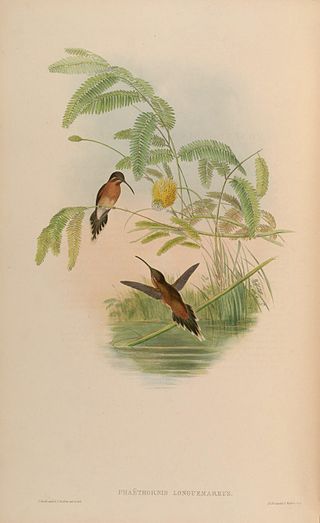
The little hermit is a hummingbird that is a resident breeder in north-eastern Venezuela, northern Guyana, Suriname, French Guiana and Trinidad. This lowland species occurs in various semi-open wooded habitats, e.g. mangrove, secondary forest, plantations and scrub. In Trinidad it also occurs in rainforest. It is fairly common in most of its range, and therefore listed as Least Concern by BirdLife International.
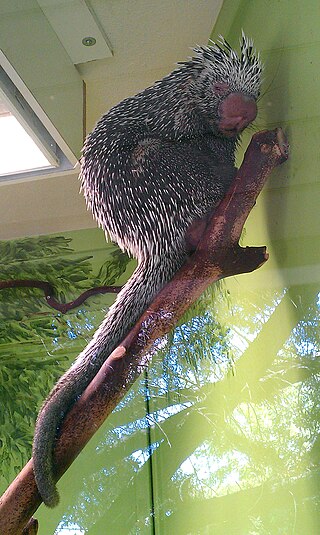
The Brazilian porcupine is a porcupine found in Brazil, Argentina, Uruguay, Colombia, Venezuela, Guyana, French Guiana, Peru, Paraguay, Suriname, Bolivia and Trinidad, with a single record from Ecuador. It inhabits tropical forests at elevations up to 1500 m.

The honeycomb cowfish belongs to family Ostraciidae. It is also known simply as the trunkfish or cowfish.
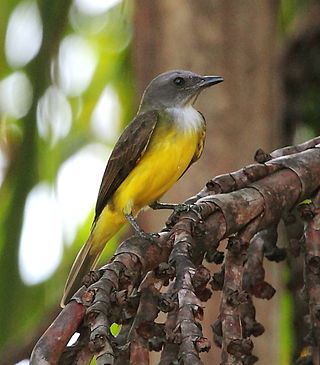
The sulphury flycatcher is a passerine bird which is a localised resident breeder from Trinidad, the Guianas and Venezuela south to Amazonian Peru, northern Bolivia and Brazil.
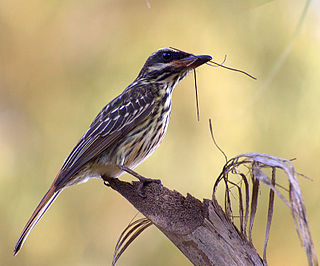
The streaked flycatcher is a passerine bird in the tyrant flycatcher family.
The masked yellowthroat is a New World warbler. It has a number of separate resident breeding populations in South America. The black-lored yellowthroat and southern yellowthroat were formerly considered subspecies.

The masked duck is a tiny stiff-tailed duck ranging through the tropical Americas.

The brown violetear is a large hummingbird that breeds at middle elevations in the mountains in Central America, and western and northern South America with isolated populations on Trinidad and in the Brazilian state Bahia.
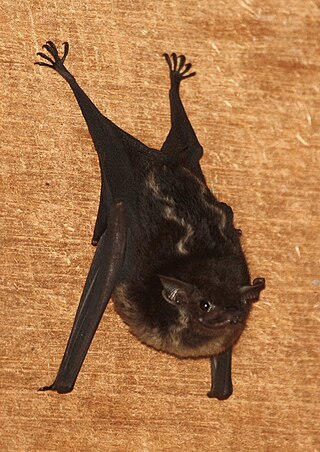
The greater sac-winged bat is a bat of the family Emballonuridae native to Central and South America.

The mangrove snapper or gray snapper is a species of snapper native to the western Atlantic Ocean from Massachusetts to Brazil, the Gulf of Mexico, Bermuda, and the Caribbean Sea. The species can be found in a wide variety of habitats, including brackish and fresh waters. It is commercially important and is sought as a game fish. It can also be found in the aquarium trade.

The rock beauty, also known as corn sugar, coshubba, rock beasty, catalineta, and yellow nanny, is a species of marine ray-finned fish, a marine angelfish belonging to the family Pomacanthidae. It is found in the western Atlantic Ocean.

The scrawled cowfish is a species of boxfish native to the western tropical and equatorial Atlantic, as well as the Gulf of Mexico. They range in size from 8–15 inches (20–38 cm), with a maximum length of 18 inches (46 cm), and can be found at depths between 6 and 80 feet. It is common to occasional in Florida and Bahamas; occasional to uncommon in the Caribbean. It also occurs in the Gulf of Mexico, north to Massachusetts, Bermuda and south to Brazil in tropical and warm temperate waters.

The pinnated bittern, also known as the South American bittern, is a large member of the heron family (Ardeidae) found in the New World tropics. Like the other Botaurus bitterns, its plumage is mostly buffy-brown and cryptically patterned. Though it is a widespread species, it is rarely seen – presumably due to its skulking habits – and much about its life history remains little known.
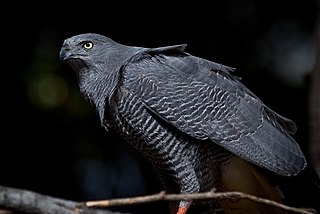
The crane hawk is a species of bird of prey in the family Accipitridae. It is monotypic within the genus Geranospiza.

Echidna catenata, commonly known as the chain moray, is a moray eel found in shallow parts of the western Atlantic Ocean and from islands elsewhere in the Atlantic. It occasionally makes its way into the aquarium trade. It grows to a maximum length of 165 cm (65 in) but a more common length is about 40 cm (16 in).

The Trinidad motmot is a colorful near-passerine bird endemic to the forests and woodlands of Trinidad and Tobago. This species and the blue-capped motmot, Lesson's motmot, whooping motmot, Amazonian motmot, and Andean motmot were all considered conspecific. Though found on both islands, this bird is more abundant in Tobago than it is in Trinidad.

The creole wrasse is a species of wrasse native to the western Atlantic Ocean.

The black-lored yellowthroat is a New World warbler. It has a number of separate resident breeding populations in South America from western Ecuador to western Peru. It was previously considered a subspecies of the masked yellowthroat.

The southern yellowthroat is a New World warbler. It has a number of separate resident breeding populations in South America from southeastern Peru, eastern Bolivia, and south Amazonian Brazil to Argentina and Uruguay. It was previously considered a subspecies of the masked yellowthroat.























